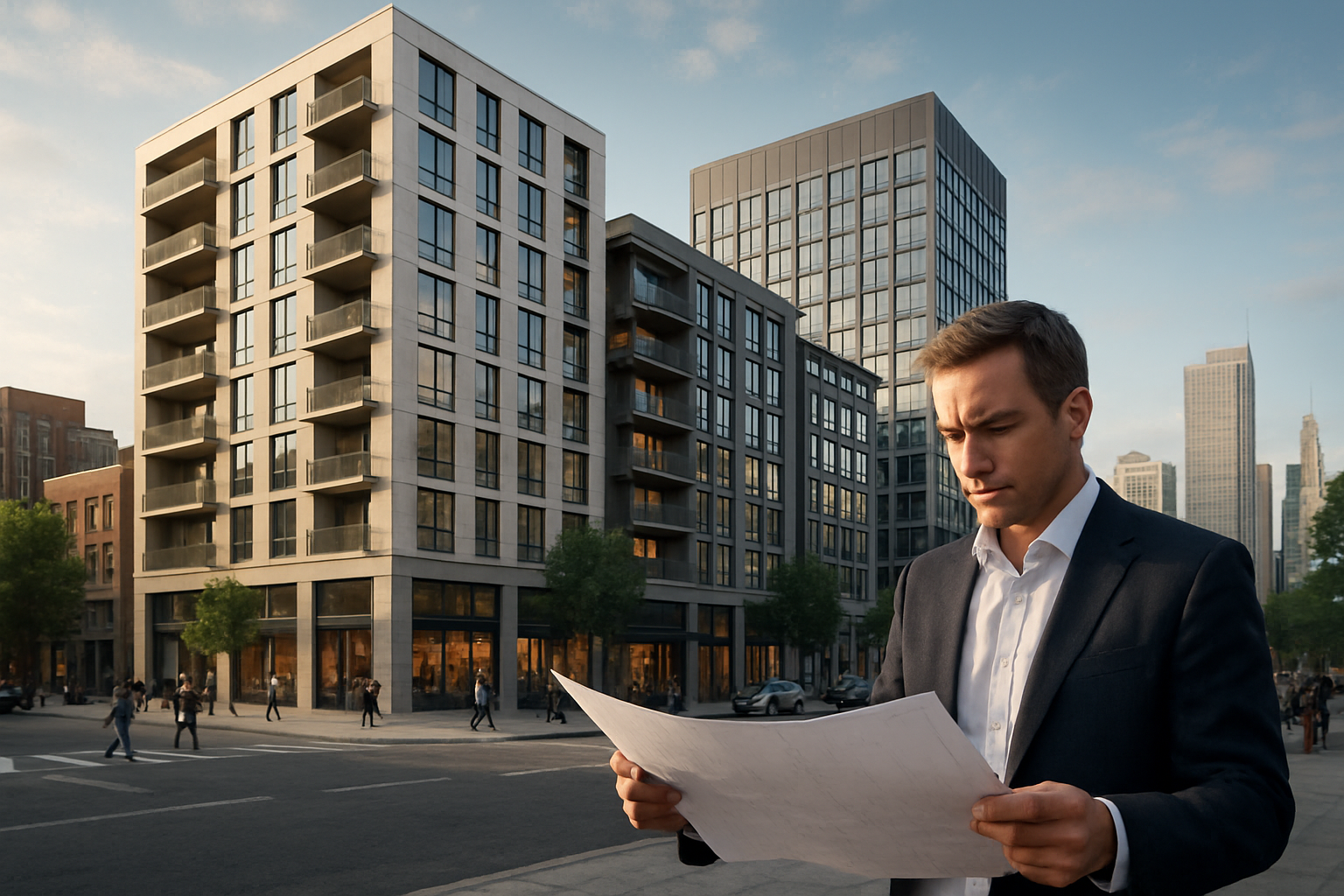Adaptive Reuse: Transforming Commercial Spaces into Residential Havens
The real estate landscape is witnessing a paradigm shift as developers and investors explore innovative ways to repurpose existing structures. Adaptive reuse, the practice of converting commercial buildings into residential spaces, is gaining traction as a solution to urban housing shortages and the changing dynamics of city centers. This trend is reshaping skylines, revitalizing neighborhoods, and offering unique living experiences to city dwellers.

The Rise of Adaptive Reuse in Real Estate
Adaptive reuse is not a new concept, but its prominence in the real estate sector has grown significantly in recent years. This surge can be attributed to several factors, including the increased demand for urban housing, the need for sustainable development practices, and the changing nature of work that has left many commercial spaces vacant.
Historically, adaptive reuse projects were often limited to historic preservation efforts. However, the scope has expanded dramatically, encompassing a wide range of building types and architectural styles. From Art Deco office buildings to mid-century modern hotels, developers are finding creative ways to reimagine these spaces for residential use.
Economic Advantages of Commercial-to-Residential Conversions
The financial benefits of adaptive reuse projects are multifaceted. For developers, these conversions often prove more cost-effective than new construction. Existing structures already have foundational elements in place, potentially reducing overall project costs and timelines. Additionally, many of these buildings are situated in prime urban locations, offering instant access to established neighborhoods and amenities.
From an investment perspective, adaptive reuse projects can yield attractive returns. The unique character of converted spaces often commands premium rents or sale prices, appealing to tenants and buyers seeking distinctive living environments. Moreover, these projects can qualify for various tax incentives and grants aimed at promoting urban revitalization and historic preservation.
Challenges and Considerations in Adaptive Reuse
While the potential of adaptive reuse is significant, it comes with its own set of challenges. One of the primary hurdles is navigating zoning regulations and building codes. Many commercial structures were not designed with residential use in mind, necessitating significant modifications to meet safety standards and livability requirements.
Technical challenges also abound. Reconfiguring floor plans, upgrading mechanical systems, and ensuring adequate natural light can be complex and costly. Developers must carefully assess the structural integrity of the building and its potential for residential conversion before embarking on a project.
Impact on Urban Planning and Community Development
Adaptive reuse projects have the power to transform entire neighborhoods. By repurposing vacant or underutilized commercial buildings, these conversions can inject new vitality into urban areas. This approach aligns with the principles of smart growth and sustainable urban development, reducing sprawl and making efficient use of existing infrastructure.
Furthermore, these projects often preserve architectural heritage, maintaining the character and history of urban landscapes. This aspect resonates with many residents and can foster a sense of community pride and identity. As cities grapple with housing shortages and the need for urban renewal, adaptive reuse offers a compelling solution that balances progress with preservation.
Case Studies: Successful Commercial-to-Residential Transformations
Examining successful adaptive reuse projects provides valuable insights into the potential of this approach. One notable example is the conversion of a former bank headquarters in a major metropolitan area into luxury condominiums. The developers retained the building’s imposing facade and grand lobby, incorporating these elements into a unique residential experience that celebrates the structure’s history.
Another compelling case is the transformation of an obsolete shopping mall into a mixed-use community. By reimagining the vast parking lots as green spaces and converting anchor stores into apartments, the project breathed new life into a struggling suburban area. These examples illustrate the versatility and impact of adaptive reuse in diverse urban and suburban contexts.
Future Outlook for Adaptive Reuse in Real Estate
As the real estate industry continues to evolve, adaptive reuse is poised to play an increasingly significant role. The ongoing shift towards remote work and the resulting surplus of office space present new opportunities for conversion projects. Additionally, the growing emphasis on sustainability in real estate development aligns well with the principles of adaptive reuse.
Looking ahead, we can expect to see more innovative approaches to adaptive reuse. This may include the conversion of parking structures into residential units as urban transportation patterns change, or the transformation of big-box retail stores into mixed-use developments. The key to success will lie in creative problem-solving and a willingness to reimagine the potential of existing structures.
In conclusion, adaptive reuse represents a compelling frontier in real estate development. By breathing new life into commercial spaces, this approach offers solutions to urban housing challenges while preserving architectural heritage and promoting sustainable development. As cities continue to evolve, the innovative repurposing of existing structures will play a crucial role in shaping the urban landscapes of the future.





